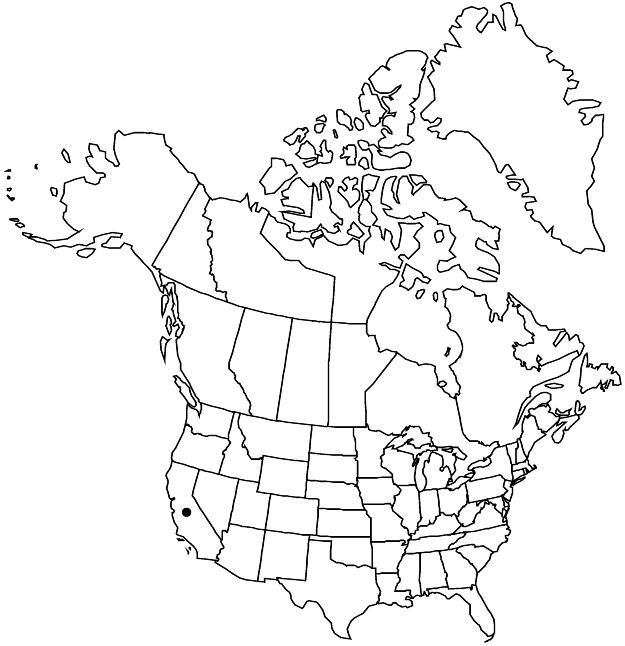Difference between revisions of "Ceanothus jepsonii"
Man. Bot. San Francisco, 78. 1894.
FNA>Volume Importer |
imported>Volume Importer |
||
| (6 intermediate revisions by 2 users not shown) | |||
| Line 10: | Line 10: | ||
|special_status={{Treatment/ID/Special_status | |special_status={{Treatment/ID/Special_status | ||
|code=F | |code=F | ||
| − | |label= | + | |label=Illustrated |
}}{{Treatment/ID/Special_status | }}{{Treatment/ID/Special_status | ||
|code=E | |code=E | ||
| Line 29: | Line 29: | ||
|distribution=Calif. | |distribution=Calif. | ||
|discussion=<p>Varieties 2 (2 in the flora).</p><!-- | |discussion=<p>Varieties 2 (2 in the flora).</p><!-- | ||
| − | --><p>Ceanothus jepsonii, composed of two, allopatric varieties, is the only species with mostly six (rarely eight) sepals and petals, and cymules reduced to solitary flowers (M. A. Nobs 1963). T. M. Hardig et al. (2000) provided evidence showing that the two varieties may not form a monophyletic group. H. McMinn (1942) and Nobs (1963) reported putative hybrids with C. cuneatus and C. prostratus.</p> | + | --><p><i>Ceanothus jepsonii</i>, composed of two, allopatric varieties, is the only species with mostly six (rarely eight) sepals and petals, and cymules reduced to solitary flowers (M. A. Nobs 1963). T. M. Hardig et al. (2000) provided evidence showing that the two varieties may not form a monophyletic group. H. McMinn (1942) and Nobs (1963) reported putative hybrids with <i>C. cuneatus</i> and <i>C. prostratus</i>.</p> |
|tables= | |tables= | ||
|references= | |references= | ||
| Line 52: | Line 52: | ||
-->{{#Taxon: | -->{{#Taxon: | ||
name=Ceanothus jepsonii | name=Ceanothus jepsonii | ||
| − | |||
|authority=Greene | |authority=Greene | ||
|rank=species | |rank=species | ||
| Line 63: | Line 62: | ||
|publication title=Man. Bot. San Francisco, | |publication title=Man. Bot. San Francisco, | ||
|publication year=1894 | |publication year=1894 | ||
| − | |special status= | + | |special status=Illustrated;Endemic |
| − | |source xml=https:// | + | |source xml=https://bitbucket.org/aafc-mbb/fna-data-curation/src/2e0870ddd59836b60bcf96646a41e87ea5a5943a/coarse_grained_fna_xml/V12/V12_194.xml |
|genus=Ceanothus | |genus=Ceanothus | ||
|subgenus=Ceanothus subg. Cerastes | |subgenus=Ceanothus subg. Cerastes | ||
Latest revision as of 19:14, 5 November 2020
Shrubs, 0.5–1.5 m. Stems erect to ascending, not rooting at nodes; branchlets reddish to grayish brown, rigid, puberulent, glabrescent. Leaves not fascicled, deflexed; petiole 0–2 mm; blade ± cupped, slightly folded lengthwise adaxially, elliptic to ± oblong, 10–20 × 5–13 mm, base rounded, margins thick or slightly revolute, spinose-dentate, teeth 7–11, apex rounded or sharply acute, abaxial surface pale yellowish green, glabrous, adaxial surface pale green, glabrous. Inflorescences axillary or terminal, 1–2 cm. Flowers: sepals and petals (5–)6(–8), usually blue to lavender or white, rarely pink; nectary blue; stamens (5–)6(–8). Capsules 5–7 mm wide, lobed; valves rugose, horns subapical, prominent, thick, erect, rugose, intermediate ridges present.
Discussion
Varieties 2 (2 in the flora).
Ceanothus jepsonii, composed of two, allopatric varieties, is the only species with mostly six (rarely eight) sepals and petals, and cymules reduced to solitary flowers (M. A. Nobs 1963). T. M. Hardig et al. (2000) provided evidence showing that the two varieties may not form a monophyletic group. H. McMinn (1942) and Nobs (1963) reported putative hybrids with C. cuneatus and C. prostratus.
Selected References
None.
Key
| 1 | Sepals and petals usually pale blue to lavender, rarely pink or white; capsules globose. | Ceanothus jepsonii var. jepsonii |
| 1 | Sepals and petals white; capsules ± oblong. | Ceanothus jepsonii var. albiflorus |
